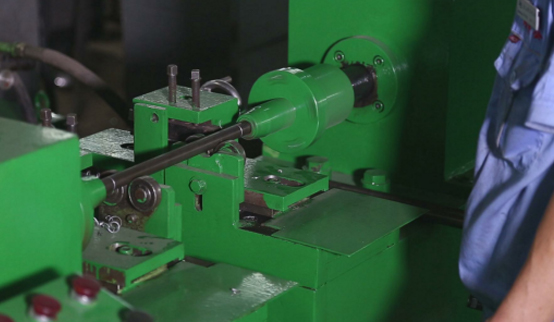 Afrikaans
Afrikaans  Albanian
Albanian  Amharic
Amharic  Arabic
Arabic  Armenian
Armenian  Azerbaijani
Azerbaijani  Basque
Basque  Belarusian
Belarusian  Bengali
Bengali  Bosnian
Bosnian  Bulgarian
Bulgarian  Catalan
Catalan  Cebuano
Cebuano  Corsican
Corsican  Croatian
Croatian  Czech
Czech  Danish
Danish  Dutch
Dutch  English
English  Esperanto
Esperanto  Estonian
Estonian  Finnish
Finnish  French
French  Frisian
Frisian  Galician
Galician  Georgian
Georgian  German
German  Greek
Greek  Gujarati
Gujarati  Haitian Creole
Haitian Creole  hausa
hausa  hawaiian
hawaiian  Hebrew
Hebrew  Hindi
Hindi  Miao
Miao  Hungarian
Hungarian  Icelandic
Icelandic  igbo
igbo  Indonesian
Indonesian  irish
irish  Italian
Italian  Japanese
Japanese  Javanese
Javanese  Kannada
Kannada  kazakh
kazakh  Khmer
Khmer  Rwandese
Rwandese  Korean
Korean  Kurdish
Kurdish  Kyrgyz
Kyrgyz  Lao
Lao  Latin
Latin  Latvian
Latvian  Lithuanian
Lithuanian  Luxembourgish
Luxembourgish  Macedonian
Macedonian  Malgashi
Malgashi  Malay
Malay  Malayalam
Malayalam  Maltese
Maltese  Maori
Maori  Marathi
Marathi  Mongolian
Mongolian  Myanmar
Myanmar  Nepali
Nepali  Norwegian
Norwegian  Norwegian
Norwegian  Occitan
Occitan  Pashto
Pashto  Persian
Persian  Polish
Polish  Portuguese
Portuguese  Punjabi
Punjabi  Romanian
Romanian  Russian
Russian  Samoan
Samoan  Scottish Gaelic
Scottish Gaelic  Serbian
Serbian  Sesotho
Sesotho  Shona
Shona  Sindhi
Sindhi  Sinhala
Sinhala  Slovak
Slovak  Slovenian
Slovenian  Somali
Somali  Spanish
Spanish  Sundanese
Sundanese  Swahili
Swahili  Swedish
Swedish  Tagalog
Tagalog  Tajik
Tajik  Tamil
Tamil  Tatar
Tatar  Telugu
Telugu  Thai
Thai  Turkish
Turkish  Turkmen
Turkmen  Ukrainian
Ukrainian  Urdu
Urdu  Uighur
Uighur  Uzbek
Uzbek  Vietnamese
Vietnamese  Welsh
Welsh  Bantu
Bantu  Yiddish
Yiddish  Yoruba
Yoruba  Zulu
Zulu Conveyor Take Up Pulley - Optimize Your Conveyor Belt System
Conveyor Take-Up Pulley An Essential Component in Material Handling Systems
In the field of material handling, the conveyance of goods and products relies heavily on an array of components, among which the conveyor take-up pulley plays a crucial role. This essential element aids in maintaining the tension of the conveyor belt, ensuring efficient operation and longevity of the entire system.
Understanding the Take-Up Pulley
A conveyor take-up pulley is typically positioned at the end or at an intermediate section of a conveyor belt system. Its primary function is to adjust the tension of the belt. Proper belt tension is vital as it prevents slippage during operation, ensures that materials are transported efficiently, and minimizes wear and tear on both the belt and the components connected to it. Without adequate tension, a conveyor belt may sag, leading to misalignment, reduced operational efficiency, and increased maintenance costs.
Types of Take-Up Systems
There are several types of take-up systems that can be utilized depending on the specific needs of a conveyor system
1. Gravity Take-Up This is the most common type, where the pulley is suspended and the weight of the take-up pulley and additional weights provide the necessary tension. The simplicity of this system makes it a popular choice for many industrial applications.
2. Automatic Take-Up In this system, a tensioning device automatically adjusts the position of the pulley to maintain consistent belt tension. This method is beneficial in high-speed applications or in systems where fluctuating loads may cause changes in tension.
conveyor take up pulley

3. Manual Take-Up Some systems may require manual adjustments to the take-up pulley. While this can be effective, it necessitates regular checks and maintenance to ensure optimal tension is achieved.
Importance of Proper Maintenance
Regardless of the type of take-up pulley in use, regular maintenance is critical. Dirt, debris, and wear can accumulate on the pulley and its associated components, leading to decreased performance. Regular inspections and timely replacement of worn parts can prevent operational downtime and extend the lifespan of the conveyor system.
Advancements in Technology
The development of smart technologies has also begun to impact the functioning of conveyor take-up systems. Sensors can now monitor tension levels in real-time, providing valuable data that can lead to proactive maintenance interventions. This technological evolution not only enhances operational efficiency but also supports predictive maintenance strategies, thereby reducing unplanned outages.
Conclusion
In summary, the conveyor take-up pulley plays an indispensable role in the operational integrity of conveyor systems. By maintaining appropriate belt tension, it contributes to the efficiency, safety, and longevity of material handling operations. As industries continue to evolve, staying updated with advancements in technology and maintenance practices will allow operators to maximize the performance of their conveyor systems, paving the way for increased productivity and cost-effectiveness in material handling processes. The significance of this component, therefore, cannot be overstated—it is indeed a linchpin in the successful operation of conveyor systems.
-
Revolutionizing Conveyor Reliability with Advanced Rubber Lagging PulleysNewsJul.22,2025
-
Powering Precision and Durability with Expert Manufacturers of Conveyor ComponentsNewsJul.22,2025
-
Optimizing Conveyor Systems with Advanced Conveyor AccessoriesNewsJul.22,2025
-
Maximize Conveyor Efficiency with Quality Conveyor Idler PulleysNewsJul.22,2025
-
Future-Proof Your Conveyor System with High-Performance Polyurethane RollerNewsJul.22,2025
-
Driving Efficiency Forward with Quality Idlers and RollersNewsJul.22,2025





























